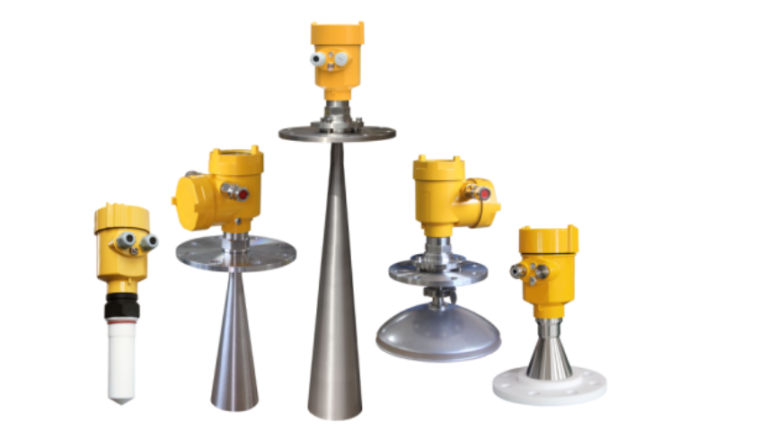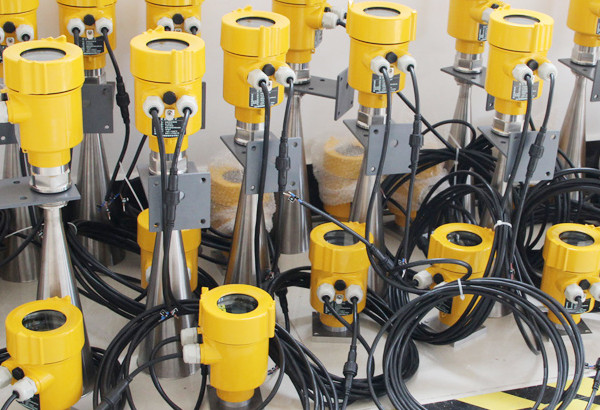In the ethanol production process, raw material silos are important facilities for storing raw materials for ethanol production, and accurate measurement of their material levels is of great significance to ensure production efficiency and product quality. As a high-precision measuring instrument, radar level meter is widely used in material level measurement in raw material silos of ethanol production.
This article will introduce the characteristics of ethanol production silos, and use a practical case to illustrate the application of radar level meters in the material level measurement of ethanol production raw material silos.

Raw material silos for ethanol production usually have the following characteristics: In order to meet the needs of large-scale production, the raw material silos usually have larger volumes and higher heights.
This makes material level measurement more challenging. The internal structure of the raw material bin is complex, and the material flow and accumulation status are changeable, which puts forward higher requirements for the accuracy and stability of material level measurement.
The material properties (such as density, temperature, viscosity, etc.) in the raw material bin are prone to changes, which affects the measurement accuracy of the material level.
Some raw material warehouses may have high-temperature and high-pressure environments, which places higher requirements on the performance and safety of measuring instruments.

In view of the above characteristics, the radar level meter has become an ideal choice for level measurement of raw material silos in ethanol production due to its advantages of non-contact measurement, high accuracy, and good stability.
The following is an actual measurement case: an ethanol production company uses corn as the main raw material to produce ethanol through a fermentation process. The raw material warehouse is an important facility for storing corn, and the accurate measurement of its material level is of great significance to ensure production efficiency and product quality.
To this end, the company chose a high-performance radar level meter to monitor the material level of the raw material bin in real time. In the actual measurement process, the radar level meter detects the surface of the material by emitting high-frequency electromagnetic waves and receives the reflected signal.
By measuring the time difference between microwave emission and reflection, the distance between the material surface and the radar level meter is calculated to obtain the material level height. The radar level meter has high measurement accuracy and can adapt to various complex environments, ensuring the accuracy and stability of material level measurement.

In order to ensure the accuracy and reliability of the radar level meter, the company also regularly calibrates and maintains the radar level meter. During the calibration process, material data at different heights are collected to verify the accuracy and reliability of the radar level meter. At the same time, regular maintenance and upkeep of the radar level gauge is required to ensure its long-term stable operation.
In addition, the company also uses the control system to automatically control and optimize the management of raw material warehouses. When the material level is lower or higher than the set value, the control system can automatically adjust the feed or discharge flow to ensure the stability and continuity of the production process.
At the same time, the radar level meter also has a fault self-diagnosis function. When a fault occurs, it can send out an alarm signal in time, making it easier for enterprises to discover and deal with problems in a timely manner.

Actual case analysis shows that radar level meters have high application value in measuring the level of raw material bins in ethanol production. Its non-contact measurement method, high precision and good stability provide enterprises with a reliable means of material level monitoring.
At the same time, the automatic control and fault self-diagnosis functions of the radar level gauge also provide strong support for the optimization and management of the enterprise’s production process.
